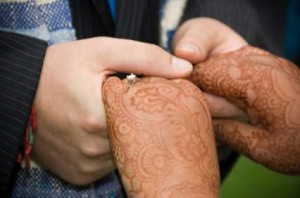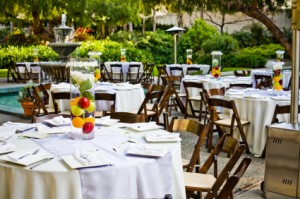 Planning a wedding comes with a lot of stress, but additional worry and difficulties might surface before and during a cross-cultural or inter-faith wedding. The clash of traditions, customs, and radically different ways of life can create quite a storm for the bride and groom.
Planning a wedding comes with a lot of stress, but additional worry and difficulties might surface before and during a cross-cultural or inter-faith wedding. The clash of traditions, customs, and radically different ways of life can create quite a storm for the bride and groom.
More cross-cultural wedding ceremonies occur each year than ever before due to the connections brought about by travel and global economies. This means that a lot of people have had to deal with mothers-in-law that aren’t just protective of their baby boy, but who are sometimes wholly unable to communicate with their future daughter-in-law.
For example, it was extraordinarily difficult for a Jewish person to marry outside their faith in the past because it was socially unacceptable and even condemned in ancient times. Fortunately, engaged couples often no longer need to worry about any real penalty associated with marriage and their faith or culture.
The sharing of wedding vows between people from different sides of the planet doesn’t need to be a stressful experience, and it can indeed be wonderfully memorable. Advanced planning and the acceptance that everything might not go exactly how the bride and groom might wish are important for creating a wedding ceremony that is the start of a beautiful life together.
One of the most significant elements of planning a cross-cultural or inter-faith marriage ceremony is the effort made to reduce the chance of offending a family member or guest. A lot of creativity is required to maintain adherence to relevant social customs while still offering a couple a chance to design their own, unique wedding together.
Even engaged couples who are from similar countries or nations where there is a common language, such as the United States and England, might have a hard time arranging everything to everyone’s satisfaction. The first project should usually involve looking into local wedding traditions and figuring out which events should be included as a show of inter-faith or cross-cultural unity.
Today, one of the biggest issues might be the officiant, and which faith to which that person might adhere. A modern solution to this problem, for some couples, has been to include officiants of both faiths in the ceremony in an effort to combine the most significant elements of the ceremonies as they are observed by different faiths.
For some couples, the officiant might not be someone with a religious background, and while this might make things simpler, there may still be elements of wedding ceremonies that might be traditional for the bride, but not for the groom.
For example, one intriguing element of a Saudi Arabian wedding that an American might never have considered is the traditional “Sabaa,” which is a party that takes place one week after a marriage and is attended by only the women who were part of the wedding party. The fascinating thing is that this traditional party actually has an American equivalent in the bridal shower, which is held months before the wedding in the United States instead of after it, as in Saudi Arabia.
It may also surprise some couples to find out that there truly are a lot of similarities between cultures regarding marriage. It is a worldwide phenomenon that marriage is an exciting time in anyone’s life and is a celebration for all involved, no matter what their faith or national origin. Focusing on these universal elements of a happy marriage will help to make the wedding vows a powerful, memorable, and incredible experience for the couple and their family.




 The wedding reception is a party held after a wedding ceremony. When the ceremony is over, it is customary for the newlywed couple to invite guests who attended the wedding ceremony to a reception. But where does this tradition come from?
The wedding reception is a party held after a wedding ceremony. When the ceremony is over, it is customary for the newlywed couple to invite guests who attended the wedding ceremony to a reception. But where does this tradition come from?

